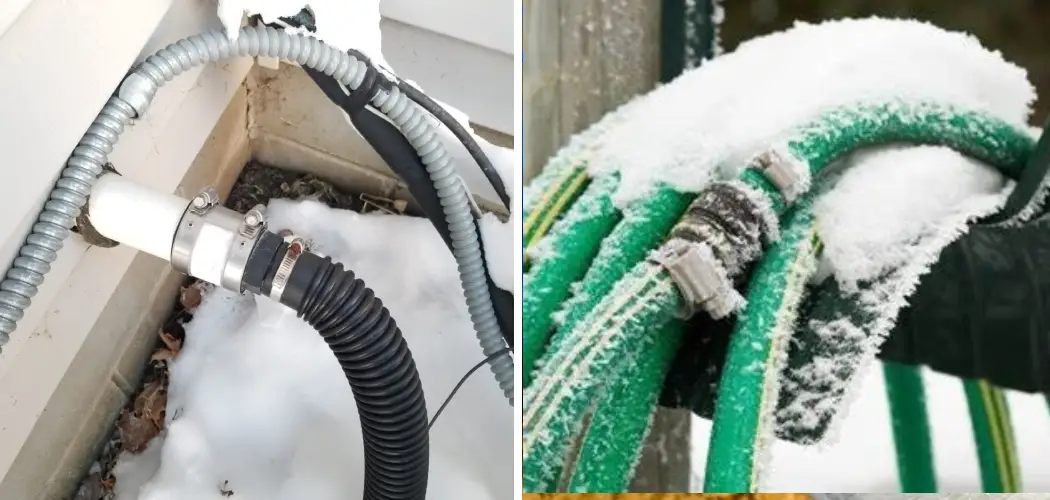Preparing our homes and outdoor spaces for the cold weather is important as the winter season approaches. One aspect that requires attention is your drainage system, specifically your garden hose. Leaving a garden hose filled with water during freezing temperatures can cause damage to both the hose and your plumbing system.
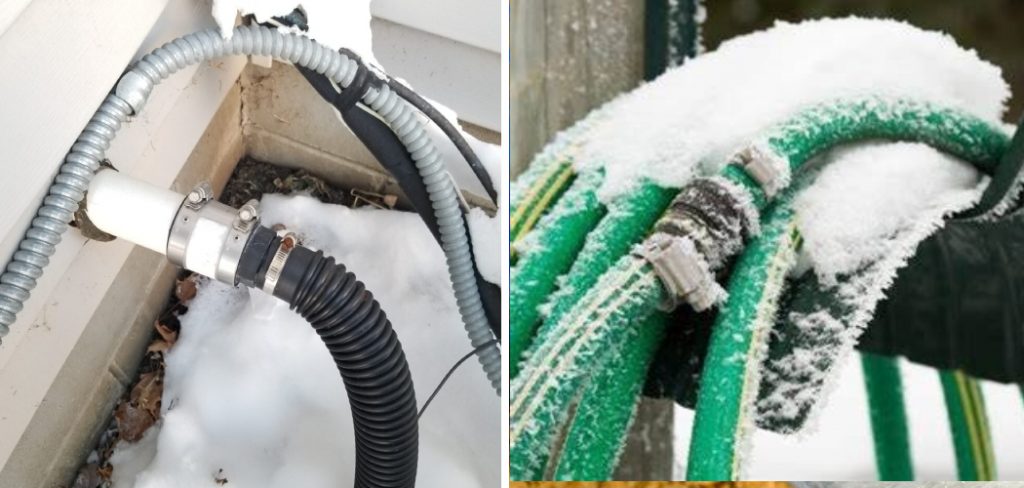
In this guide, we will discuss how to drain hose for winter to prevent any potential issues and ensure it is in good condition when you need it again in the warmer months.
Why Drain Your Hose for Winter?
During winter, temperatures can drop below freezing, which can cause water inside your garden hose to freeze. When water freezes, it expands and can potentially cause your hose to burst. This damages the hose and puts unnecessary pressure on your plumbing system.
Also, leaving water inside the hose can lead to mold and mildew growth, which can affect water quality when you use it again in the spring. Draining your hose for winter is a simple solution that can save you from costly repairs and maintenance in the long run.
Understanding the Risks of Draining Hose for Winter:
While draining your hose for winter is important, it is also essential to do it correctly to avoid any potential risks. One common mistake when draining a garden hose is not allowing all the water to fully drain out. This can leave some pockets of water inside the hose, which can still cause freezing and damage.
Another risk is forgetting to disconnect the hose from the outdoor faucet or spigot. This can prevent water from fully draining out and also cause damage to the faucet itself.
To avoid these risks, following proper procedures when draining your hose for winter is important.
11 Best Ways on How to Drain Hose for Winter
1. Start by Removing Any Attachments:
Before draining your hose, remove any attachments, such as spray nozzles or sprinklers. This will ensure that all parts of the hose are properly drained and prevent potential damage to the attachments. This is also a great time to clean and store these attachments for the winter. If they are left outside, they can also freeze and become damaged.
2. Straighten Out the Hose:
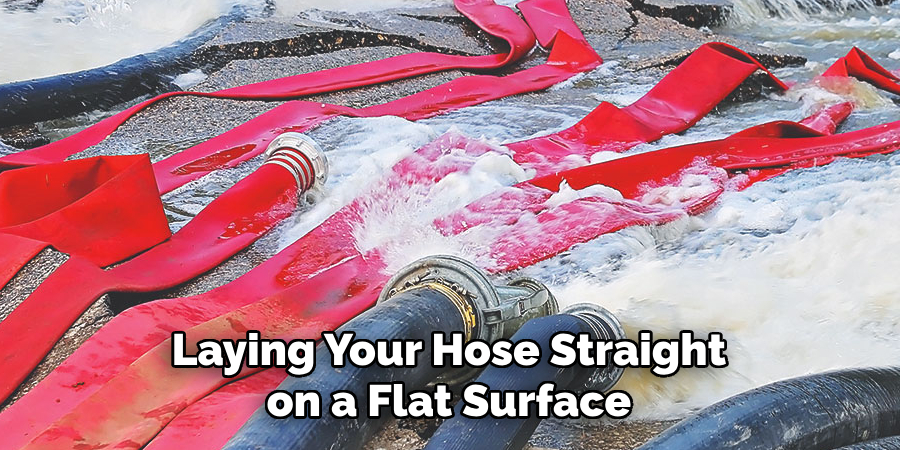
Laying your hose straight on a flat surface will help drain the water more efficiently. This is because any kinks or bends in the hose can trap pockets of water, which can cause freezing and damage. If your hose is coiled, you can carefully uncoil it to straighten it out. Make sure to wear gloves, as the hose may be cold and wet.
3. Disconnect from Outdoor Faucet:
Make sure to disconnect your garden hose from the outdoor faucet or spigot. This will allow any water in the faucet to drain out, preventing potential damage and freezing. Use pliers if necessary to loosen any tight connections. If your outdoor faucet has a shut-off valve, turn it off to prevent any residual water from flowing back into the hose.
4. Elevate One End of the Hose:
After disconnecting from the outdoor faucet, elevate one end of the hose to allow gravity to help drain out any remaining water. This can be done by propping one end up on a deck or railing or by coiling one end of the hose and placing it on a higher surface. This will ensure that all the water is drained out of the hose.
5. Use a Hose Drainage Tool:
If your garden hose is longer and heavier, it may be difficult to elevate one end. In this case, you can use a hose drainage tool known as a siphon or pump. This tool uses suction to remove any remaining water from the hose. Insert it into one end of the hose and let it drain out into a bucket or drain. Using a hose drainage tool can save you time and effort, especially with longer hoses.
6. Use Compressed Air:
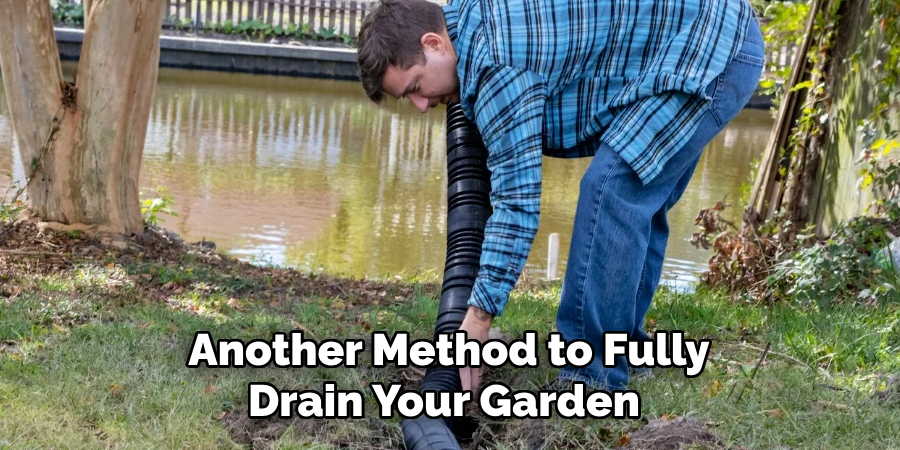
Another method to fully drain your garden hose is by using compressed air. This is also known as blow-out or winterizing. To do this, you will need an air compressor and a special attachment that fits onto the end of the hose.
Slowly increase the air pressure to force out any remaining water from the hose. This method can also be used for sprinkler systems. Using compressed air is a quick and efficient way to drain your hose for winter.
7. Drain the Hose Into a Bucket:
If you cannot access a hose drainage tool or an air compressor, you can manually drain the water out of the hose. Hold one end of the hose over a bucket and let gravity do its work. This method may take longer, but it is effective in removing all the water from the hose. If your hose is longer, you may need to relocate the bucket a few times to drain out all the water.
8. Use the Sun’s Heat:
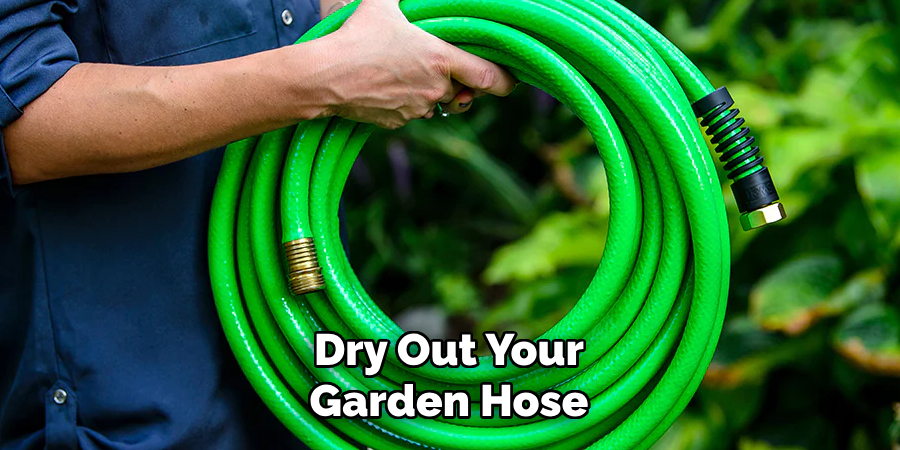
If you have some time before winter arrives, you can also use the sun’s heat to help dry out your garden hose. Lay it out in a sunny spot and let it absorb the warmth. This will help evaporate any remaining water in the hose.
However, this method may not be as effective during colder months when the sun’s heat is less intense. If you choose to use this method, make sure to monitor the weather and bring in your hose before it rains or snows.
9. Hang Your Hose Vertically:
Another way to drain your garden hose is by hanging it vertically on a hook or rack. This will allow any remaining water to drip from the hose instead of pooling inside. Make sure to hang the hose in a well-ventilated area to prevent mold and mildew growth.
You can also use this method in combination with the sun’s heat for faster results. This method is ideal for those with limited space or who prefer to keep their house organized and out of the way.
10. Use a Wet-Dry Vacuum:
If you have access to a wet-dry vacuum, you can use it to suck out any remaining water from your garden hose. This method is similar to a hose drainage tool but may be more powerful and efficient. Insert the vacuum hose into one end of the garden hose and let it run until all the water is removed.
This method is not recommended for smaller or lighter hoses. Using a wet-dry vacuum is also ideal for cleaning out any debris and dirt from the inside of your hose before storing it for winter.
11. Store Your Hose Properly:
Once you have drained all the water from your garden hose, storing it properly for the winter is important. Ensure that it is coiled neatly and that kinks or knots that can damage the hose are avoided.
Store your garden hose in a dry and cool place, away from direct sunlight and extreme temperatures. You can also use a hose reel or storage container to keep it organized and protected. This will ensure that your hose is ready for use when spring arrives.
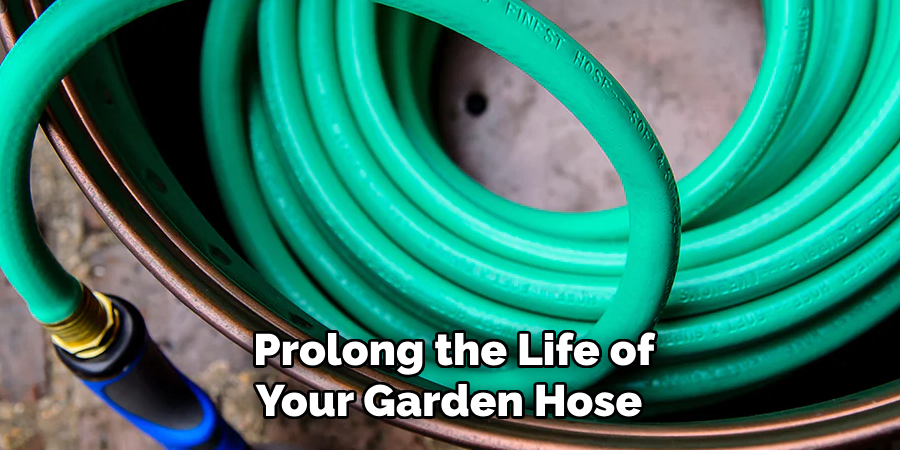
Following these tips on how to drain your hose for winter can help prevent any potential damage and prolong the life of your garden hose. It is important to take the time to drain and store your hose properly, as it can lead to costly repairs or replacements in the future.
By following these methods, you can easily prepare your garden hose for winter and ensure its longevity for years to come. Remember, a little maintenance now can save you time and money in the long run. So, make sure to take care of your garden hose before winter arrives! Happy gardening!
Additional Tips and Tricks to Drain Hose for Winter
- If your drain hose is still not draining properly after following the above steps, try using a plumber’s snake or auger to remove any stubborn clogs. This tool can be inserted into the drain hose and used to break up any debris or blockages.
- Consider insulating your drain hose with heat tape or foam pipe insulation. This can help prevent freezing and keep water flowing during extremely cold temperatures.
- Regularly check and clean the end of the drain hose where it discharges into a drainage area or sump pump. Debris, such as leaves or dirt, can become trapped here and cause blockages over time.
- If you live in an area with frequent freezing temperatures, consider investing in a heated drain hose. These hoses are designed to keep water flowing even in subzero temperatures.
- To prevent potential damage to your drain hose, avoid placing heavy objects on top of it or running over it with lawn equipment. This can cause kinks and tears that can lead to leaks or blockages.
- If you need to store your drain hose during the winter, make sure to fully empty out any remaining water and allow it to dry completely before coiling it up and storing it in a dry location. This can help prevent any residual water from freezing and causing damage.
- Consider adding a backflow preventer to your drain hose to prevent any water from flowing back into your home’s plumbing system during heavy rains or flooding.
- If you are experiencing recurring issues with your drain hose, it may be time to replace it with a new, more durable one. Look for hoses made of materials specifically designed for cold weather use.
- When in doubt, consult a professional plumber for assistance with draining your hose and preventing freezing or clogs. They can offer personalized advice and recommendations based on your specific situation.
- Regular maintenance and preventative measures can go a long way in ensuring your drain hose stays functional and free from issues during the winter months.
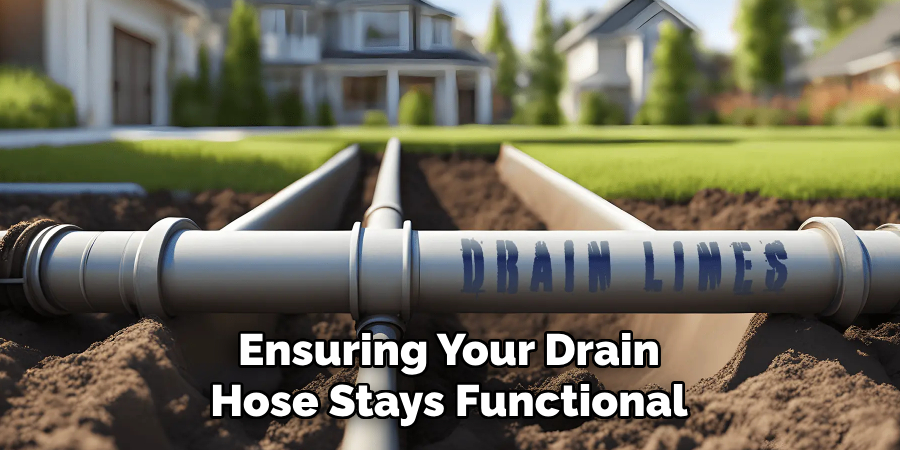
Following these additional tips and tricks can help save you time, money, and frustration in dealing with a frozen or clogged drain hose. Remember to always prioritize safety and consult a professional if needed before attempting any DIY solutions.
Stay ahead of the game by properly preparing your drain hose for winter now! Keep your home safe from potential plumbing issues and enjoy peace of mind throughout the cold season. Happy draining!
Things You Should Consider to Drain Hose for Winter
- The first thing to consider is the type of hose you have. If you have a regular garden hose, it is important to drain all the water from it before winter sets in. This will prevent any leftover water from freezing and causing damage to your hose.
- Another factor to take into consideration is the location of your outdoor faucets and hoses. If they are located in an area that is prone to freezing temperatures, it is crucial to properly drain them before winter arrives.
- You should also make sure to disconnect your hose from the outdoor faucet and store it in a dry, sheltered location for the winter. This will prevent any damage to the hose from extreme temperatures or harsh weather conditions.
- If you have a retractable or expandable hose, it is important to fully retract or collapse it before storing it for the winter. This will remove any excess water and prevent any damage from freezing temperatures.
- It is also important to check for any leaks or damages in your hose before storing it for the winter. If you notice any leaks or tears, be sure to repair them before putting the hose away.
- In addition to draining your hoses, it is also important to drain and winterize your outdoor faucets or spigots. This can be done by turning off the main water supply to the outdoor faucet and then opening up the valve to release any remaining water.
- If you have an irrigation system, make sure to properly drain it before winter as well. This can be done by turning off the main water supply and opening up all the valves to release any remaining water.
- When storing your hoses, make sure to keep them in a dry and sheltered location, such as a garage or shed. This will protect them from extreme temperatures and harsh weather conditions.
- If you live in an area with particularly harsh winters, consider investing in a heated hose or insulation for your outdoor faucets. This can help prevent any freezing or damage to your hoses and outdoor faucets.
- Lastly, be sure to properly store any attachments or accessories that go along with your hoses, such as spray nozzles or sprinklers. These should also be stored in a dry location to prevent any damage from freezing temperatures.
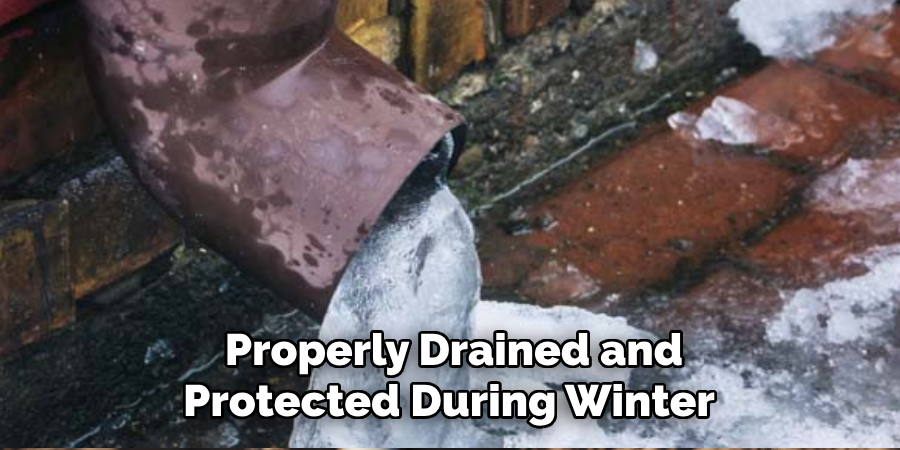
Following these considerations will ensure that your hoses and outdoor faucets are properly drained and protected during winter. This will prevent any damage and save you time and money in the long run by avoiding costly repairs or replacements.
Remember to always take care of your equipment, even during the off-season, to prolong its lifespan and functionality. So remember to prepare your hoses for winter before it’s too late! Happy gardening!
Frequently Asked Questions
Why is It Important to Drain Garden Hoses Before Winter?
Draining garden hoses before winter is important because water left inside them can freeze, expand, and cause cracks or bursts in the hoses. This can lead to expensive and unnecessary repairs or replacements in the spring. Leaving water in garden hoses can also damage other gardening equipment, such as sprinklers or hose reels.
Can I Just Leave the Hoses Connected to My Outdoor Faucet?
No, leaving garden hoses connected to outdoor faucets during winter is not recommended. Even if you drain the hoses, water may still be left in the faucet and pipes, which can freeze and cause damage. It is best practice to disconnect and drain all hoses before winter.
How Do I Drain a Garden Hose?
First, turn off the outdoor faucet it is connected to to drain a garden hose. Then, lift it up from one end of the hose and slowly drag it towards the other end. This will allow gravity to pull out any remaining water in the hose. You can also use compressed air to blow out any excess water.
What Happens if I Forget to Drain My Hose for Winter?
If you forget to drain your hose for winter, the water inside can freeze and expand, causing cracks or bursts in the hoses. This can result in costly repairs or replacements in the spring. Leaving water in garden hoses can also damage other gardening equipment, such as sprinklers or hose reels.
Are There Any Other Precautions I Should Take for My Garden Hoses in Winter?
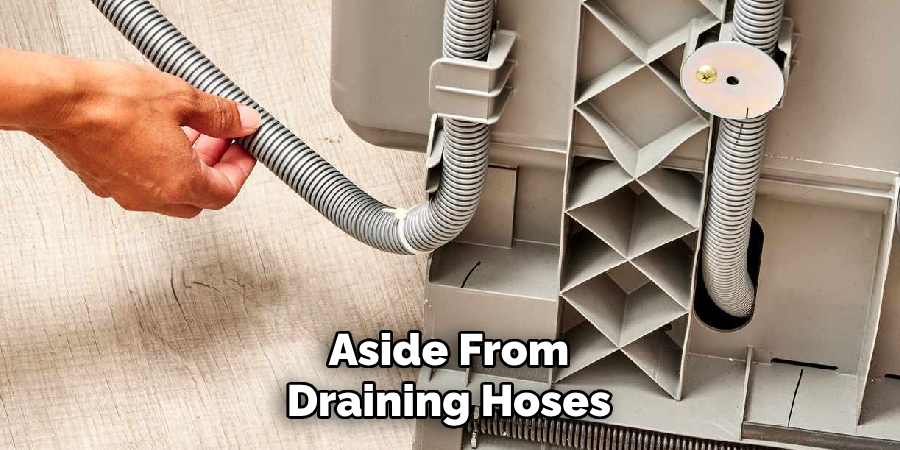
Aside from draining hoses, storing them properly during winter is also important. Make sure they are stored in a dry and sheltered area to prevent any potential damage from harsh weather conditions. Consider investing in hose covers or foam insulation to protect your hoses from freezing temperatures.
Conclusion
Now you know how to drain hose for winter and why it is important to do so. Taking a few minutes to properly drain your garden hoses can save you time, money, and hassle in the long run. Remember to also store them properly during winter for added protection. With these simple steps, you can ensure that your garden hoses will be ready for use when spring comes around again. Happy gardening!

